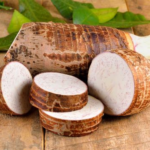WHAT IS PALMYRA
The sugar palm fruit, often referred to as a palmyra fruit, develops in clusters on tall palm trees. In the Indo-Malaya region of South and Southeast Asia, palm trees are native. The fruits of the sugar palm have a husk that is black and range in size from 4 to 7 inches. Three sweet jelly seed sockets that are translucent, pale white in colour, and have a somewhat sweet flavour can be seen if the top of the Palmyra fruit is removed. The fruit’s jelly section is covered by a thin, yellowish-brown skin, and its white, fleshy body is filled with watery fluid. The sugar palm fruit has very little protein and no fat, but it is particularly high in calcium and phosphorus.
PALMYRA HEALTH BENEFITS
Sugar palm fruits are a nutritious choice for persons on a diet or dealing with diabetes because they are high in vitamins and minerals. It is a good source of iron, zinc, potassium, calcium, phosphorus, vitamins B and C, thiamine, and riboflavin.
- Good for skin
- Cure for stomach problems
- Healthy diet options
- Home remedies for many ailment It is used to treat worm infestation as well as nausea and vomiting. It is employed as a liver tonic as well as an expectorant.
HOW TO EAT PALMYRA FRUIT
The fruits’ skins should be consumed alongside them for the greatest health advantages. The sugar palm fruit’s ripened fibrous outer layer is also edible and can be eaten raw, boiled, or roasted. Add the jelly in chunks along with the honey and milk. Proper planning will help you combat the summer heat. Several Asian dishes, including rice, puddings, sweets, curries, and candies, also employ palmyra palm sugar.
PALMYRA ALSO KNOWN AS HEART OF THE PALM
SIDE EFFECTS OF PALMYRA
After Palmyra is used as intended, no side effects are known or recorded. However, excessive drinking of fresh palm juice might result in intoxication-like symptoms.




 Previous Post
Previous Post